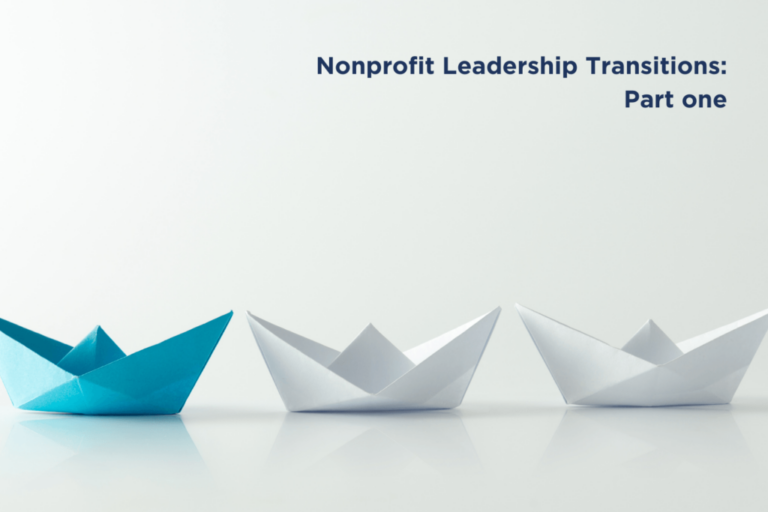Nonprofit Leadership Transitions, Part 1

An overview of nonprofit leadership transitions
Nonprofit leadership transitions can happen at any time for reasons both planned and not. Regardless, with a strong understanding of the role and responsibilities board members, staff, and other stakeholders can take on, a nonprofit leadership transition offers a variety of opportunities for an organization. In the past 10 months, we’ve gotten a crash course in when those transitions might occur: many nonprofit executive directors are reaching retirement age, the pandemic is affecting the sector, and emerging leaders are responding to crisis and change in their communities. Throughout any of these circumstances the board plays a critical role in the preparation, search, onboarding, and support of a new leader.
Before we begin: understanding the difference
The first step to undergoing a transition is to understand the difference between a succession plan and a transition plan. A succession plan is ongoing, long-term planning, aimed at identifying and cultivating future leaders who would assume leadership positions within an organization, whereas a transition plan is a hands-on, short-term action plan aimed at ensuring a thoughtful and effective transition from one executive leader to another. The transition plan is a subset of the succession plan.
In an ideal world, the board should review the succession plan once a year or once every other year to review the critical relationships and activities of an organization’s leadership. A transition plan identifies specific activities and what to prepare for in the next 12 months: who gets assigned what duties, and could ask, what is the profile of the candidate we want to search for and hire?
Where are you starting from?
Board members may only see one leadership transition during their board service career, so it is important for the board to be prepared – they ensure continuity for the organization during the transition. All forms of leadership transition provide an opportunity for organizational renewal, and understanding the opportunities of the various kinds of leadership transitions is the first step in leading the organization through a transition.
Types of Leadership Transitions:
- Unexpected Departures
- Abrupt and unexpected departures can be both an opportunity and challenge for board members to further practice their leadership and governance while ensuring continuity for the organization.
- Planned Departure of Long-Term Leaders/Founders
- In this situation, board members can both honor the contribution of a long-time leader and create space to hold thoughtful conversation on the organization’s future leadership needs, which may be different than the leadership qualities of the departing leader.
- Leadership Development, Advancement
- Cultivating new leaders can be the result of boards intentionally creating space for new leadership to take root and be supported.
- Change/Turnaround Needed
- These types of transitions can be an opportunity for boards to lean into their strategic direction and hire someone who can lead the organization through a strategic pivot to set the organization on its desired long-term course.
- First Paid Leader for New or Volunteer-Led Organization
- For emerging organizations, hiring your first paid staff leader can bring with it an opportunity to think of the infrastructure needed by the organization to grow and sustain mission impact, and the qualities needed in a first paid leader who can build the organization’s infrastructure and footprint in the sector.
Once the board understands what kind of transition they are facing, and considers what they should be thinking about in terms of the transition, the work of executing a transition plan can begin.
We’ll be discussing this topic on January 28, 2021 at our Nonprofit Leadership Transitions Webinar. Register here for free.
This blog is part of a three-part series by Mario Hernandez and Amanda Ziebell Mawanda. Subscribe to our newsletter to make sure you don’t miss part two: What we’ve seen.

